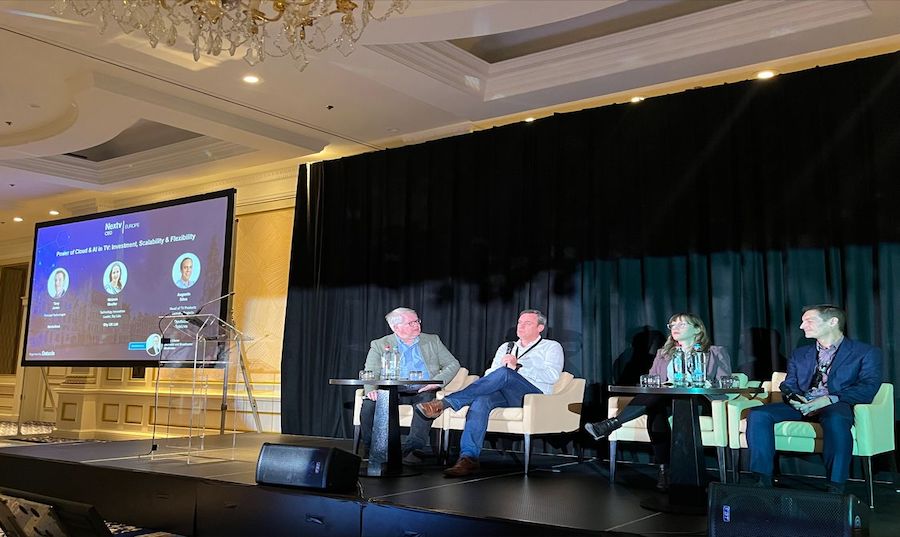Last month’s NexTV CEO Europe event was a wonderful get-together of the TV, telco, OTT, and entertainment industry. Aside from being in the beautiful city of Brussels, I had the pleasure of catching up with friends old and new, and speaking on a panel session alongside Sky UK’s Melanie Moeller, and Augusto Silva of Deutsche Telekom. It was a thoroughly engaging session where we discussed how AI and cloud are driving innovations in operator media workflows, spotlighted new opportunities for telcos and MVPDs, and defined the way forward in cloud development.
Discussions at the show captured a broad array of topics and trends impacting the TV industry today, however there were a few top takeaways that particularly stood out for me, that I share below.
FAST channels moving fast
FAST (free ad-supported TV) was undoubtedly the hot topic at the show with its adoption continuing to reach new levels. The consensus among attendees was that the rise of FAST in 2022 has provided viewers with an affordable streaming alternative, eliminating the headaches they face when navigating enormous on-demand libraries while maintaining the flexibility and user experience of a streaming service. It is a practical approach to generating revenue and is not just consumed by younger demographics.
These re-born linear services offer far more personalization than traditional linear TV and are an incredibly valuable tool for broadcasters to maximize their content libraries and effectively utilize their assets. It was interesting to hear that US FAST services have taken off rapidly due to the sheer amount of content produced there, while European FAST services have just started to break through with Pluto TV and Xumo. Although FAST has captured the imagination of the content industry, the question that now arises is whether SVOD, AVOD, and FAST can all co-exist.
This was an area MediaKind recently explored in an application paper outlining the market trends, key players, barriers to entry, and how the entire media value chain can best seize the opportunities within the streaming space. You can download the full paper here.
Growth of targeted ads
Another trending topic from the show was the huge acceleration of personalized advertising technology and the double-sided benefit they bring to operators and consumers alike. Any pay-TV operator’s goal is to deliver content offerings that provide the best experiences to their audience in the most cost efficient manner. Luckily, as the addressable TV advertising landscape continues to evolve, new technology developments emerge by the day, and practices surrounding standards and compliance are regularly renewed and updated.
Operators can leverage the technological advancements in this area to better understand their audiences, helping them build closer relationships like never before through content personalization and targeted advertising. AI and the cloud are opening the way for deeper audience insights in the future, and the evolution of the market is only set to continue.
Sustainability high on the agenda
Sustainability within the media and entertainment industry has mainly focused on the consumer end and the sheer volume of devices within the hands of viewers and subscribers. However, there is also a need to reduce carbon emissions within the media delivery infrastructure. The concept of a greener broadcast is still fairly new to the industry and findings from the session show that sustainability comes from the vendors themselves, and only 15% at operator level. However, regulatory requirements for CO2 per user is expected in the future. Conditions such as “streaming slower” could be offered as future options to reduce CO2.
Fewer people travelling to broadcast sites by a greater employment of remote production will also help reduce carbon emissions and remove the reliance on on-premises hardware – leading to less energy and power concerns. The broadcast sector has the opportunity to lead the way in areas such as sustainability, if organizations start to incorporate ‘green’ technology and approaches within their workflows.
The opportunities for telcos, broadcasters and operators to solidify their position as leading entertainment service providers – and set the agenda for delivering media innovation in an attainable and sustainable way – has never been higher. A big thank you to the NexTV team for delivering another fantastic show. Until next time!



